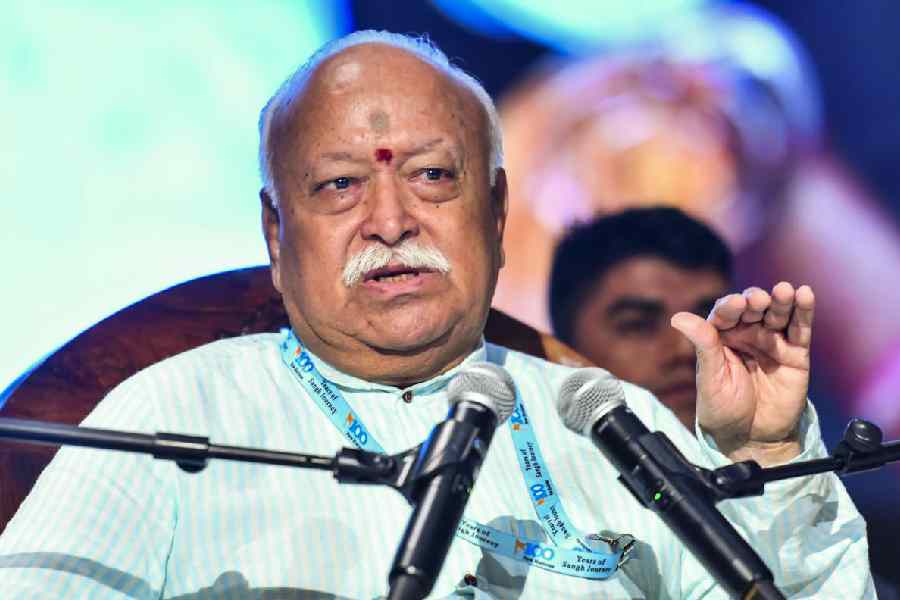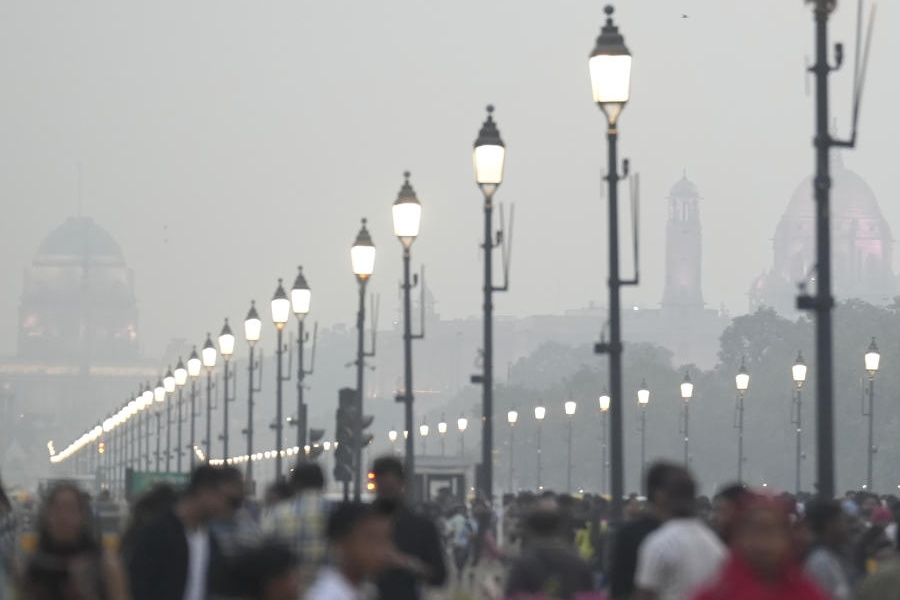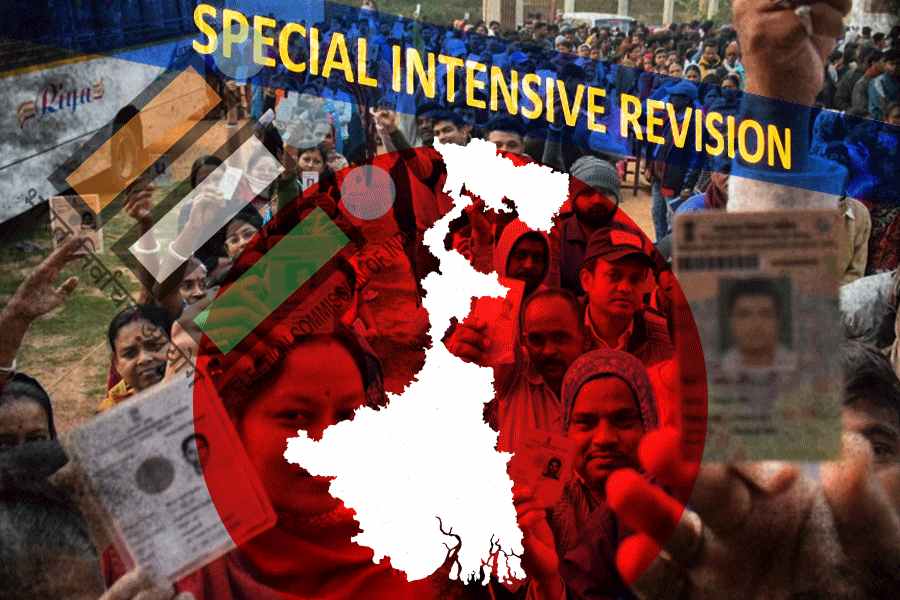I first read about scientist Jayant Vishnu Narlikar in the Bengali magazine Desh. JVN had proposed the Steady State Theory, which states that the universe is supposed to remain the same in all directions for all time, even when it is expanding.
JVN was born on July 19, 1938, in Kolhapur, Maharashtra. His parents taught at Banaras Hindu University. After doing his bachelor’s, Narlikar went to Cambridge University in the UK for higher studies and topped a tough mathematics course.
I was only 10 years old at the time I discovered JVN and his seminal work. Those days I was fascinated with extra-terrestrials. My favourite books in school were Santimay Chatterjee’s Are We Alone in the Universe? and Swiss author Erich von Daniken’s Chariots of the Gods. Then there was physicist George Gamow’s One, Two, Three... Infinity and The Black Cloud by Fred Hoyle. All these books
deal with the evolution of the Universe and the possible origin of life here and elsewhere.
Daniken had proposed that extraterrestrials or “ancient astronauts” visited Earth in the distant past and influenced human culture. He interpreted structures such as the Egyptian pyramids, the Stonehenge and the Moai of Easter Island as evidence of extraterrestrial influence.
Back to JVN. He also wrote science fiction. Some of the stories were quite prophetic. In a story called Virus, published in 2015, he envisioned a pandemic taking over the world. His 1986 book in Marathi, Waman Parat Na Ala (The Return of Vaman), tackled the ethical dilemmas of artificial intelligence.
In any case, back then, after reading JVN, I came to hero worship him. I was quite sure he would be awarded a Nobel Prize in physics some day.
At Cambridge, Narlikar teamed up with his PhD guide, the physicist Sir Fred Hoyle. Together, Narlikar and Hoyle laid the groundwork for a revolutionary theory that boldly proposed the continuous creation of new matter in an infinite universe. Their theory was based on what they called a quasi-steady state model.
Chandra Wickramsinghe, another student of Hoyle of Sri Lankan origin, was working on the possibility of life form entering Earth from outer space. Known as the Panspermia model, JVN joined this group much later.
Just when the Hoyle-Narlikar theory was becoming popular and congratulations and awards were pouring in, Princeton physicists Arno Penzias and Robert Woodrow Wilson claimed that the universe came into existence in one single event about 14 billion years ago. And, that the universe was hot in the past. This was the new model of the universe, which Hoyle jokingly called the Big Bang model. If the universe was hot in the past, today we should see the relics of that hot radiation, he pointed out. Penzias and Wilson discovered that relic radiation and in 1978 bagged the Nobel — a nail in the coffin of the Steady State Theory.
For a while, when I was still a student, I tried to reconcile the two contradictory models of the universe in my head.
It was JVN who introduced me to the universe in my childhood, but it was not until 1986, when I was a faculty at Caltech, that I contacted JVN for the first time. He was the head of the department of theoretical astrophysics at Mumbai’s Tata Institute of Fundamental Research (TIFR) and I was exploring a position there.
JVN asked me to apply. The process took a while and in the meantime he quit TIFR for a new institute called Inter-University Centre for Astronomy and Astrophysics (IUCAA) in Pune. I eventually joined TIFR, but I shall always remember JVN’s enthusiasm and his role in convincing me to return to India.
In the following years, we grew closer but never had the opportunity to collaborate on either of his favourite topics — Panspermia or Steady State Theory.
In 2000, my wife Sonali and I advanced our own theory about the beginning of life on Earth in the renowned Astronomy & Astrophysics journal. We argued that DNA constituents and several amino acids can be generically produced during star formation anywhere in the universe. We suggested that whether ultimately life is created depends on the host planet’s habitability. We did not follow either Daniken or JVN’s model.
When American astrophysicist John Bahcall of Princeton University congratulated us for proposing the idea regarding DNA formation, JVN was upset! He wrote me a long email with a list of papers he wrote on Panspermia and asked me to cite them in our future publications.
In 2002, at S. Chandrasekhar auditorium of IUCAA, there was a grand discussion on Vision 2020. It was A.P.J. Abdul Kalam’s idea, the emphasis was on technology and innovation. The dais was full of Indian astronomers hailing from west and south India; JVN was also present.
Sitting in the audience that day, I expressed my doubt if IUCAA had indeed been successful in fulfilling its mandate to uplift astronomy and astrophysics studies in Indian universities. I suggested that every IUCAA PhD holder serve as a teacher for at least the first five years. The next day, JVN said to me, “I totally agree with you, but what can we do if universities do not create posts in astronomy and astrophysics?”
Over the years our communication with each other dwindled, but two years ago I got in touch with him to ask if he had any letters from Hoyle that I could display at the Indian Centre for Space Physics in Calcutta.
His reply was prompt, he asked me to come and see him in Pune.
When Sonali and I went to Pune, we found him in a very frail condition. He handed over many things, including many letters of reputed scientists sent to his father Vishnu Narlikar.
Little did I realise at the time that it was going to be the last time I would see them. That day, his beloved wife Mangala was pushing his wheelchair. She was herself suffering from cancer at the time. She passed away three months later.
In a scientific career, it is not always possible to write the most correct theory. Only a few, such as Einstein or Maxwell, S.N. Bose or M.N. Saha, wrote something which will last a very long time. Almost everyone else, including Newton, can dominate only for a period of time.
Personalities such as Fred Hoyle, Danis Sciama, George Gamow, John Wheeler, Arthur Eddington were brilliant but did not receive enough recognition. Those who put forward an alternative theory, or go against the tide, often contribute to the subject
very significantly. I will put JVN in this category. His brilliant ideas and alternate views created new paradigms, which perhaps strengthened and established the opposite view more strongly.
That is also a great scientific contribution.
The writer is an astrophysicist and director of the Indian Centre for Space Physics in Calcutta










